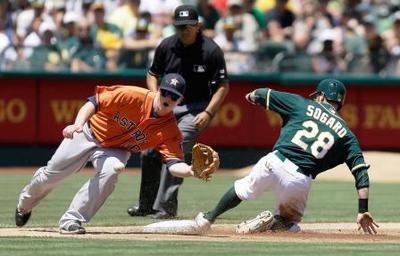How many bases are awarded when SS cuts off throw from the outfield and then throws the ball out of play?

Anonymous asked: Runner on 1B.
Batter hits a single to the left center field gap.
R1 tries to go 1B to 3B.
The SS takes the cut off throw (while standing in the infield), throws wildly to 3B and the ball rolls into the players’ bench out of play.
R1 is awarded HB. But what about the batter-runner? He was already at 1B when the outfielder made the initial throw.
My first thought was: the ball was initially thrown from the outfield (to the SS) and then thrown out of play, therefore 2 bases from the time of the throw and batter-runner is awarded 3B.
But, since it was the SS who threw the ball and it was the first play, I ended up putting the batter-runner at 2B (2 bases from the time of the pitch).
Also, does it make any difference if the SS took the cut off throw while standing in the outfield grass and then makes the wild throw?
Rick answered: Thank you for your question.
Rule 7.05 Each runner including the batter-runner may, without liability to be put out, advance:
(g) Two bases when, with no spectators on the playing field, a thrown ball goes into the stands, or into a bench (whether or not the ball rebounds into the field), or over or under or through a field fence, or on a slanting part of the screen above the backstop, or remains in the meshes of a wire screen protecting spectators. The ball is dead.
When such a wild throw is the first play
by an infielder, the umpire, in awarding such bases, shall be governed by the position of the runner at the time the ball was pitched.
In all other cases, the umpire shall be governed by the position of the runners at the time the wild throw was made.
Batter-runner ends up at second. It doesn't matter where the shortstop took the throw from, the wording is "first play by an infielder." Won't matter where he physically was at the time.
Yours in baseball,
Rick
|





